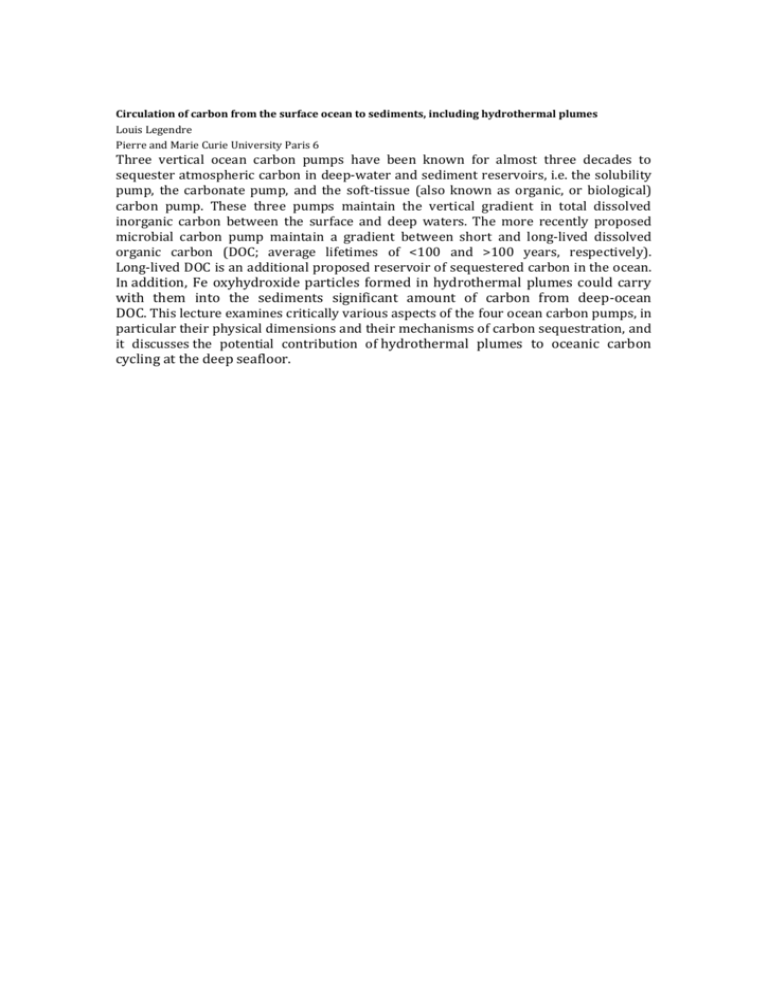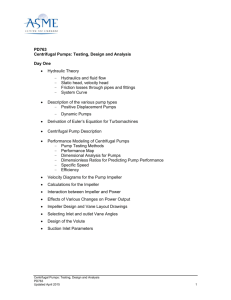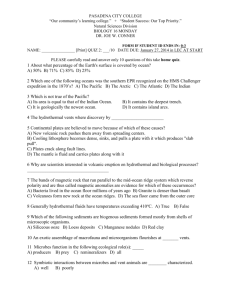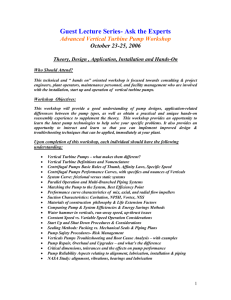Circulation of carbon from the surface ocean to sediments, including
advertisement

Circulation of carbon from the surface ocean to sediments, including hydrothermal plumes Louis Legendre Pierre and Marie Curie University Paris 6 Three vertical ocean carbon pumps have been known for almost three decades to sequester atmospheric carbon in deep-water and sediment reservoirs, i.e. the solubility pump, the carbonate pump, and the soft-tissue (also known as organic, or biological) carbon pump. These three pumps maintain the vertical gradient in total dissolved inorganic carbon between the surface and deep waters. The more recently proposed microbial carbon pump maintain a gradient between short and long-lived dissolved organic carbon (DOC; average lifetimes of <100 and >100 years, respectively). Long-lived DOC is an additional proposed reservoir of sequestered carbon in the ocean. In addition, Fe oxyhydroxide particles formed in hydrothermal plumes could carry with them into the sediments significant amount of carbon from deep-ocean DOC. This lecture examines critically various aspects of the four ocean carbon pumps, in particular their physical dimensions and their mechanisms of carbon sequestration, and it discusses the potential contribution of hydrothermal plumes to oceanic carbon cycling at the deep seafloor.











